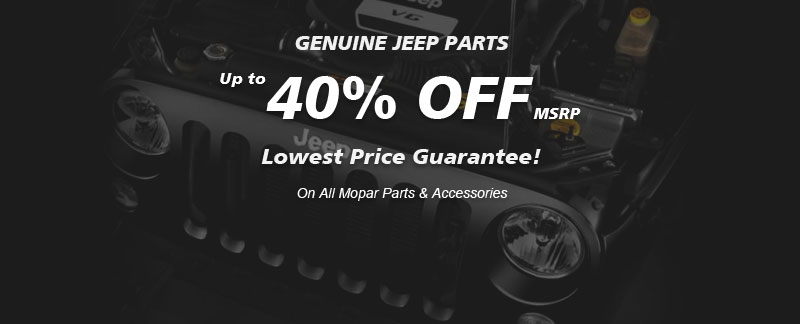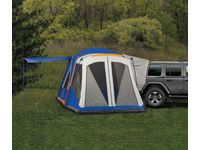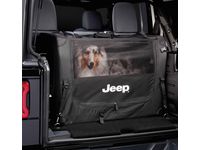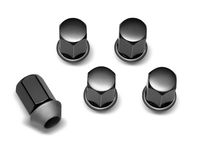- Live Chat
- 1-888-511-3595

Why choose MoparPartsGiant
- Fast Delivery
Your Jeep Wagoneer deserves only genuine parts from MoparPartsGiant.com. There's zero risk involved when buying from us because all our Jeep Wagoneer parts are expedited directly from authorized dealers and backed by the manufacturer's warranty. For years, we've been the #1 online parts store. Interested in faster shipping? We offer expedited shipping on corresponding orders!
- Dedicated Service
Our outstanding customer service team is here to help you by email, live chat, or phone call with any inquiries regarding your purchase. Dedicated representatives are standing by to assist you with your shopping needs. With a complete Jeep Wagoneer parts catalog and a full selection of inventory, your parts are ready to be expedited anywhere in the nation without delays.
- Unbeatable Prices
For any genuine parts you need for standard maintenance or repair, we carry them. With our unbelievably low prices on parts, you won't go anywhere else for Jeep Wagoneer parts. We are your one-stop shop for Jeep Wagoneer parts without breaking the bank!
Popular Genuine Jeep Wagoneer Parts
- Engine Parts View More >
- Electrical Parts View More >
- Fuel Parts View More >
- Body - Sheet Metal Except Doors Parts View More >
- Cooling Parts View More >
- Steering Parts View More >
- Brakes Parts View More >
- Suspension & Drive Parts View More >
- Transmission Parts View More >
- Exhaust Parts View More >
- Heater & Air Conditioning Parts View More >
- Body - Doors And Related Parts View More >
Shop Genuine Jeep Wagoneer Parts with MoparPartsGiant.com
The Jeep Wagoneer, a trailblazing sport utility vehicle, was sold in various versions from 1963 to 1993, and has been revived for a 2022 model year release. The model, which has redefined luxury with its opulent interior and exterior, offers capabilities like leather upholstery, three-zone automatic climate control, and many other feature-rich Jeep Wagoneer parts. The Wagoneer made its debut in November 1962 as a successor to the 1946 Station Wagon, pioneering the full-size SUV concept and boasting a body-on-frame design based on the Gladiator truck's architecture. Initially offered with rear-wheel drive, this SUV withstood 29 model years with an almost unchanged body structure, signifying its timeless appeal. Its off-road credentials were enhanced by a standard all-wheel-drive system, and it featured either a 5.9L V8 or a more economical 4.2L six-cylinder engine. The second generation, an update of the compact single-passenger Cherokee, was produced between 1983 and 1990. In 1993, the Jeep Wagoneer name was briefly used as the basis for the mid-size Grand Cherokee's ZJ model. Renowned for its four-wheel-drive capability and understated styling, the Jeep Wagoneer has remained a symbol of luxurious off-road vehicles, embodying the blend of comfort and usability on the road. The Jeep Wagoneer's enduring appeal among a new generation of enthusiasts attests to its enduring legacy as a luxury SUV.
Jeep Wagoneer, despite being a pioneer in SUV manufacturing, has common issues that require attention. One significant problem, as reported by CarComplaints.com, is starting issues, associated with engine troubles such as hard starting or failure to start. Signs to watch out for include odd engine noises like squealing or rattling, stalling, misfiring, and decreased fuel economy. If the Check Engine Light turns on, immediate inspection of the spark plug, fuel filter, fuel pump, ignition coil, fuel tank, and engine control module is recommended. Another concern is brake failure, which often manifests after a certain mileage as brake noise, poor response, pulsating brake pedal, scored rotors, leaking brake fluid, and an illuminated Brake Warning Light. Ensuring good condition of the brake pad set, brake disc, brake drum, and brake rotors is critical. To prolong the lifespan of your Wagoneer, routine maintenance is necessary, particularly for vulnerable parts. Windshield wipers, made of soft rubber, typically need replacement every six to twelve months for optimal visibility, especially considering their exposure to adverse weather. Regular upkeep of other parts like fog light, headlight, cabin air filter, and antenna contributes to a safer and more comfortable driving environment.
Choosing OEM products can lead to long-term cost savings on maintenance and repairs since they offer the highest level of durability, thanks to their strict manufacturing processes. If you're on the hunt for OEM Jeep Wagoneer parts, including Wiper & Washers And Cylinder & Keys, we strongly encourage you to explore our wide selection of Jeep Wagoneer parts, all available at the most competitive prices. We guarantee that all our genuine Wagoneer parts are accompanied by a manufacturer's warranty and an effortless return policy. We surpass numerous competitors when it comes to price, quality, and reliability.
Jeep Wagoneer Parts Questions & Answers
- Q: How do you remove the front stabilizer bar and stabilizer bar bushing on Jeep Wagoneer?A: Apply the parking brake and lift the vehicle's front on jack stands. Remove the sway bar kit-to-link nuts, noting the positions of spacers, washers, and bushings. Unbolt the links from the axle brackets if needed. Remove the sway bar kit bracket bolts and detach the bar. Check the bushings for damage and replace if necessary. To reinstall, position the bushings on the bar and push the brackets over them. Raise the bar kit to the frame and install the bracket bolts loosely. Finally, install the bar kit-to-link nuts, washers, spacers, and bushings, and tighten securely.
- Q: How to rebuild a wheel cylinder on Jeep Wagoneer?A: New wheel cylinders are available, which makes this job quite easy. If it's decided to rebuild the wheel cylinder, make sure that a rebuild kit is available before proceeding. Never overhaul only one wheel cylinder always rebuild both of them at the same time. Raise the rear of the vehicle and support it securely on jackstands. Block the front wheels to keep the vehicle from rolling. Remove the brake shoe assembly. Remove all dirt and foreign material from around the wheel cylinder. Completely loosen the brake line fitting, then remove the two wheel cylinder mounting bolts. Don't pull the brake line away from the wheel cylinder. Remove the wheel cylinder mounting bolts. Detach the wheel cylinder from the brake backing plate and place it on a clean work bench. Immediately plug the brake line to prevent fluid loss and contamination. If the brake shoe linings are contaminated with brake fluid, install new brake shoes. Remove the bleeder screw, piston cups, pistons, boots and expander assembly from the wheel cylinder body. Clean the wheel cylinder with brake fluid or brake system cleaner. Use compressed air to remove excess fluid from the wheel cylinder and to blow out the passages. Check the cylinder bore for corrosion and score marks. Crocus cloth can be used to remove light corrosion and stains, but the cylinder must be replaced with a new one if the defects cannot be removed easily, or if the bore is scored. Lubricate the new cups with brake fluid. Assemble the wheel cylinder components. Make sure the recessed sides of the cups face in. Place the wheel cylinder in position and install the bolts. Connect the brake line and tighten the fitting. Install the brake shoe assembly. Bleed the brakes. Check brake operation before driving the vehicle in traffic.





























































